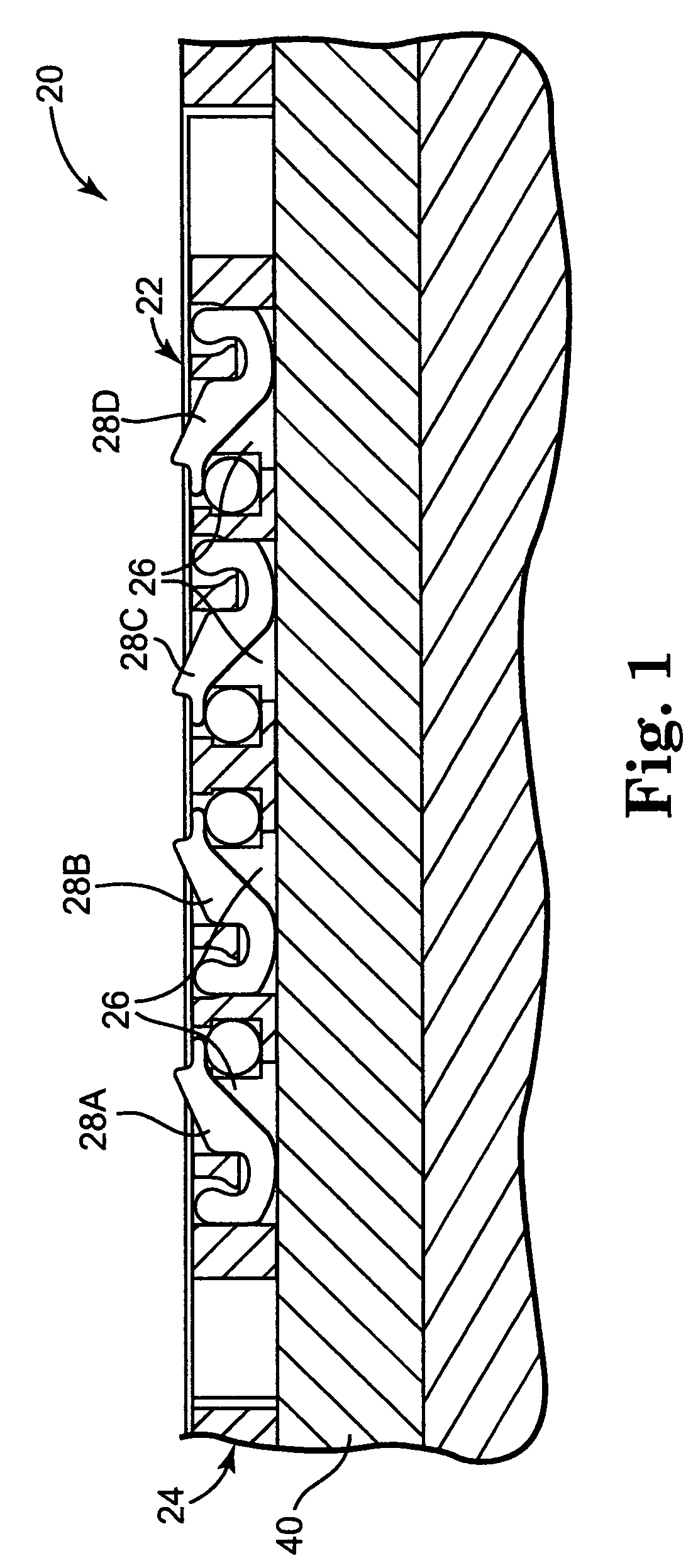Fine pitch electrical interconnect assembly
a technology of electrical interconnection and assembly, which is applied in the direction of coupling contact members, coupling device connections, securing/insulating coupling contact members, etc., can solve the problems of stressing components, soldering these connectors to printed circuit boards, and increasing scrutiny of tin lead alloy solder and associated chemicals
- Summary
- Abstract
- Description
- Claims
- Application Information
AI Technical Summary
Benefits of technology
Problems solved by technology
Method used
Image
Examples
Embodiment Construction
[0052]The present invention is directed to a technique for creating an insulator housing in low, medium, or high volume by laminating layers of precisely patterned materials. The patterned layers can be constructed from the same or multiple material types. The layers are optionally selectively laminated to relieve stress caused by thermal expansion differentials.
[0053]The present construction method permits internal features that would normally be impossible to mold or machine. For large pin count devices, the laminating process produces an inherently flat part without requiring molds. Stiffening layers made of materials such as BeCu, Cu, ceramic, or polymer filled ceramic can be added to provide additional strength and to provide thermal stability during solder reflow.
[0054]The multi-layered housing can also include circuitry layers. Power, grounding and / or decoupling capacitance can be added between layers or between pins, and unique features such as embedded IC devices or RF ante...
PUM
 Login to View More
Login to View More Abstract
Description
Claims
Application Information
 Login to View More
Login to View More - R&D
- Intellectual Property
- Life Sciences
- Materials
- Tech Scout
- Unparalleled Data Quality
- Higher Quality Content
- 60% Fewer Hallucinations
Browse by: Latest US Patents, China's latest patents, Technical Efficacy Thesaurus, Application Domain, Technology Topic, Popular Technical Reports.
© 2025 PatSnap. All rights reserved.Legal|Privacy policy|Modern Slavery Act Transparency Statement|Sitemap|About US| Contact US: help@patsnap.com



